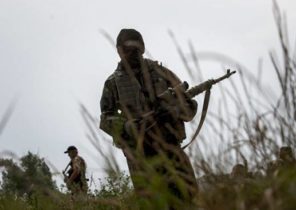
The head of the Strategic command of the armed forces of the United States (STRATCOM), General John Khayten, responding last week to journalists in Washington, said that the rate of modernization of US nuclear forces is “unacceptable.” The General said today in his possession is an effective tool of nuclear deterrence, but to remain so after his departure from office, it is necessary to accelerate the process of modernization.
Khayten said that the challenges the United States Strategic command is clear — to prevent and deter attacks on the United States, and if this is not possible, to ensure strong and effective response. The main tool, of course, is nuclear weapons.
The General noted that he is often asked how the United States can afford to modernize the entire nuclear triad from the economic point of view, but the question is, in his view, should sound differently: as the Americans can not afford to do this?
Only nuclear weapons holding back major powers from world wars and the loss of self control, according to Hatena. In order to ensure victory, the enemy will need to destroy 400 Intercontinental land-based missiles in the middle of the USA. But even if such a miracle happens, a nuclear strike will meet American submarines.
Khayten also stressed the importance of the air component of the nuclear triad. Its essence is that planes with nuclear warheads can be sent on a mission and withdraw in the process, thus showing the enemy on the one hand the readiness to launch a nuclear strike, and with another — giving him one last chance to back down from their intentions.
The General asks for the modernization of nuclear forces just over 6% of the defense budget to a potential enemy know that the country is ready to respond to aggression and the US not to attack. And he wants the budget had been painted over the years for many years to come, that there was at least some stability and understanding in the processes of modernization.
The head of Strategic command concluded that if someone dares to touch US, “peace is our profession… we will reply… with such stunning power that will spoil your day and make it so that you never attack the United States. This is our final containment”.
Between 2029 2032 years John Khayten would like to see the commissioning of a new generation of Intercontinental ballistic missiles, submarines, long-range bombers and nuclear cruise missiles of air basing. As well as the introduction of new technologies for command and control.
The special concern of the General causes as nuclear cruise missiles of air basing ALCM (Air Launched Cruise Missile). According to him, they still work, but every day is a struggle of technicians and engineers for their function. The plans provide for the replacement of old missiles cruise missiles air-launched long-range LRSO (Long Range Standoff). But in January, Pentagon chief James Mattis expressed doubt that these missiles can act as effective instrument for the containment of Russia and China.
In General, the head of STRATCOM looks pessimism on the timeline of the modernization of the nuclear triad. According to him, the procurement of weapons nothing ever happens according to plan, and in the case of nuclear rearmament it is unclear even where to begin to correct problems in procurement procedures.
Khayten cited the example of the placement of missiles Minuteman I, when funding for the program began in 1959, and in 1964 have stood up to combat duty 800 missiles across the country. It cost $ 17 billion in terms of today.
The current replacement program for those in the ranks of the Minuteman III at the new missile is estimated at $ 84 billion, it is planned to deploy 400 of the missiles, but on full alert they stand only likely in 2035. The difference in the timing and price of the programs is impressive. The same situation is with the new submarines.
The head of Strategic command believes that the blame for this all: the American politicians, financiers, military buyers, manufacturers. All are part of the process and are responsible.
Interestingly, Khayten as a case study led approach North Korea. In his opinion, North Korea is not afraid to test, fail them to try again and again to fail, but to learn from the failures of the lessons, to correct mistakes and eventually succeed. This allows the DPRK to rapidly develop its missile and nuclear programs.
In the United States are all afraid of failure and headlines. The General was referring to how negative the press covered the collapse of the administration of the company Blue Origin in 2011. Khayten believes that the Americans in his command should be allowed to take risks and “not to tie the hands of engineers”, and puts the example of SpaceX, which despite setbacks is continuing to move forward.
Another problem is the bureaucracy and micromanagement.
The head of STRATCOM would like to see a small number of people, given more opportunities, autonomy and rights in procurement processes, but also more responsibility. These people should not sit in their offices and moving paper. Their duty is to be “on the ground”, in the industry, are among the suppliers. If they don’t, they should quickly be fired and replaced by more agile.
General Khayten promised that will not give to descent neither military nor military-industrial complex, and will force all to accelerate the process of modernization of nuclear forces.
While it is expected that in October this year, the administration trump will revise US nuclear strategy, and there will be clarity in the budgets and the emphasis of modernization.
The head of Strategic command said that the United States should learn from its history and not to be complacent, relying on the global nuclear status quo. Nothing is eternal under the moon.
Khayten said, “the Reliability of our weapons systems are already unacceptable, and every year the situation will become worse. I worry that our nation will not be able to move fast enough to keep up with our opponents.”







